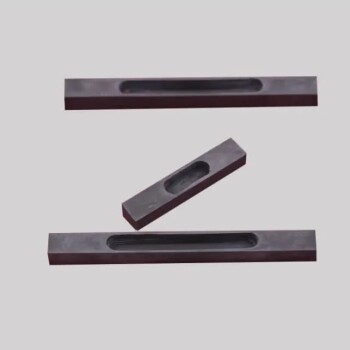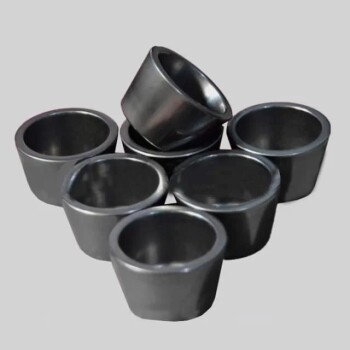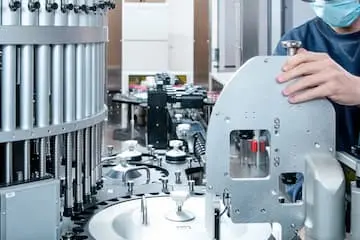High-purity graphite crucibles are used to contain materials that require high-temperature processing, like melting and casting metals and alloys. They can withstand extreme heat up to 3000°C without melting or deforming. Graphite crucibles are chemically inert, resisting corrosion from acids, bases, and solvents, making them suitable for handling various materials without contamination or reactions. They also have good thermal shock resistance, enduring rapid temperature changes without cracking. Available in different sizes and shapes, they can be cylindrical, conical, or bowl-shaped, with optional lids or caps for protection during heating or cooling.
Toggle Categories
Get Instant Support
Choose your preferred way to connect with our team
-
Get Free Quote Fill out form for detailed pricing
-
Send Email Detailed inquiry support
-
WhatsApp Quick mobile chat
Response Time
Within 8 hours on working days, 24 hours on holidays
high purity graphite crucible

High Purity Pure Graphite Crucible for Evaporation
Item Number : KME07

High Purity Pure Graphite Crucible for Electron Beam Evaporation
Item Number : KMS02
Graphite crucibles are widely used in various industries, including metallurgy, foundries, jewelry manufacturing and chemical laboratories. They are commonly used in processes such as melting and casting of metals, alloys and other materials. Their high purity and inertness ensure the integrity and quality of processed materials.
It’s important to note that while high-purity graphite crucibles are extremely durable and resistant to high temperatures and chemicals, they can still experience wear and gradual oxidation over time. Proper care and maintenance, such as avoiding thermal shock and regular cleaning, can help extend the life and performance of your graphite crucible.
To sum up, high-purity graphite crucible is a special container made of high-quality graphite material. They are designed to withstand high temperatures, resist chemical attack, and have good thermal shock resistance. Graphite crucibles are used in processes involving high-temperature material processing, such as melting and casting. Their high purity and inertness make them suitable for processing a variety of materials without causing contamination or reactions. Proper care and maintenance are necessary to maximize its life and performance.
FAQ
How Are High-purity Graphite Crucibles Made?
What Are The Common Applications Of High-purity Graphite Crucibles?
What Factors Should Be Considered When Selecting High-purity Graphite Crucibles?
REQUEST A QUOTE
Our professional team will reply to you within one business day. Please feel free to contact us!
Related Articles

How to Choose Crucible Materials That Prevent Chemical Degradation in Vacuum Induction Melting
Learn how to choose crucible materials for vacuum induction melting to prevent chemical degradation and optimize alloy purity. Essential guide for industrial applications.

Fused Silica Crucible: Properties, Applications, and Preparation Process
An in-depth look at the properties, applications, and preparation methods of fused silica crucibles in the solar photovoltaic industry.

Graphite Crucible in the Future Production of Third Generation Semiconductor Compounds
Explores the role and future trends of graphite crucibles in the production of third-generation semiconductor materials.

High Purity Graphite Crucible: Features, Production, and Usage
An in-depth look at high purity graphite crucibles, their production processes, and their industrial applications.

Inorganic Non-Metallic Materials: Crucibles
An overview of crucibles made from various inorganic non-metallic materials, their uses, technical parameters, and advantages.

Preparation and Performance of Alumina Crucibles for Vacuum Induction Melting Furnace
This article discusses the preparation process and performance benefits of alumina crucibles for vacuum induction melting furnaces, emphasizing thermal stability and long service life.

Ceramic Alumina Crucible for Thermal Analysis Test Containers
An in-depth guide on selecting and using ceramic alumina crucibles for thermal analysis tests, focusing on factors affecting test results.

Alumina Crucibles in Precision Casting
Explores the use of alumina crucibles in precision casting, focusing on their properties and advantages in high-temperature alloy melting.

Crucible Types, Properties, and Applications
A detailed overview of various crucible types, their properties, and application areas in laboratory and industrial settings.

Introduction to Various Ceramic Crucibles
An overview of different types of ceramic crucibles, their properties, and applications.

The Role and Types of Crucibles in Scientific Experiments
Explores the significance and various types of crucibles in scientific experiments, focusing on their materials and applications.

Comparison of Pyrolytic Graphite and Pyrolytic Boron Nitride Crucibles
A detailed comparison of pyrolytic graphite and pyrolytic boron nitride crucibles, focusing on their preparation processes, characteristics, and applications.

Guidelines for the Use of Boron Nitride Crucibles
Instructions on the proper use, precautions, and compatibility of boron nitride crucibles.

Electron Beam Evaporation Coating Technology and Material Selection
An in-depth look at the principles and applications of electron beam evaporation coating technology, including material selection and various fields of application.

Electron Beam Evaporation: Advanced Thin Film Creation
Explores the technology and applications of electron beam evaporation in thin film production.

Electron Beam Evaporation Coating: Principles, Characteristics, and Applications
An in-depth analysis of electron beam evaporation coating technology, its advantages, disadvantages, and applications in thin film manufacturing.

Electron Beam Evaporation Technology in Vacuum Coating
An in-depth look at electron beam evaporation, its types, advantages, and disadvantages in vacuum coating processes.

Comprehensive Overview of Vacuum Evaporation Systems
An in-depth look at vacuum evaporation systems, their principles, components, and applications.

Understanding Evaporation Plating, Sputtering Plating, and Ion Plating
A detailed comparison of evaporation plating, sputtering plating, and ion plating techniques, their principles, types, and characteristics.

Challenges in the Development and Application of Tantalum in Vacuum Deposition Equipment
This article discusses the role of tantalum in vacuum deposition equipment, focusing on its properties, manufacturing challenges, and its critical applications in industries like OLED screen production.
